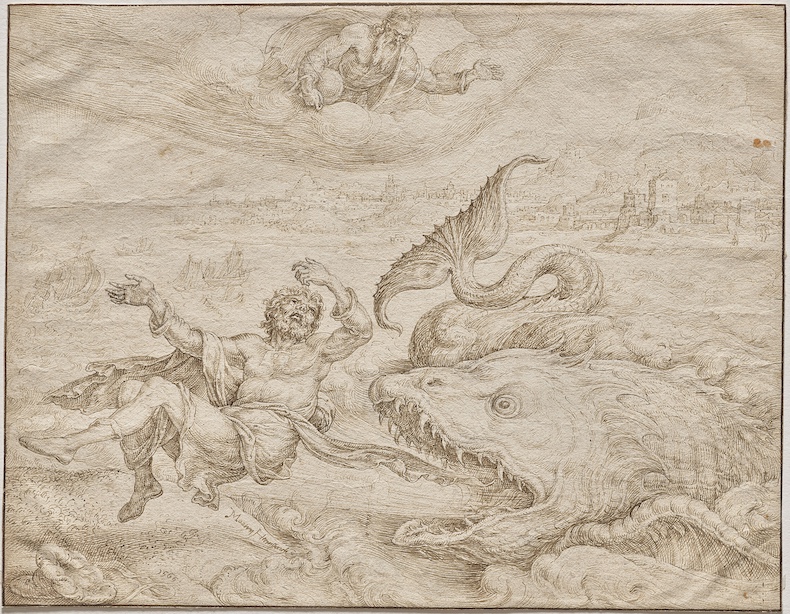Apollo’s monthly round-up of the most important works of art to have entered public collections recently
Fitzwilliam Museum, Cambridge
Intérieur d’atelier (1878), Edme-Adolphe Fontaine
The Fitzwilliam Museum in Cambridge, which earlier this year unveiled an extensive rehang of its permanent collection, has acquired a fascinating studio scene by the 19th-century French artist Edme-Adolphe Fontaine from Elliott Fine Art. The painting shows the artist’s family studio in Versailles and focuses on his daughter, the artist Marie-Claire Fontaine, in the act of painting a portrait. Edme-Adolphe Fontaine was primarily a painter of portraits and historical scenes; his style is markedly different from that of the Impressionists who staged their first exhibition in Paris just four years before Fontaine brought this painting to the Salon in 1878. But this scene is remarkably well-composed and crammed with curious details: the eerie mannequin on the left; the copious paintings hanging on the wall; the cat playing with a ball of string in the foreground; the way in which the sitter seems to be at once present in the room and part of the landscape painting behind her.
Intérieur d’atelier (1878), Edme-Adolphe Fontaine. Photo: Elliott Fine Art
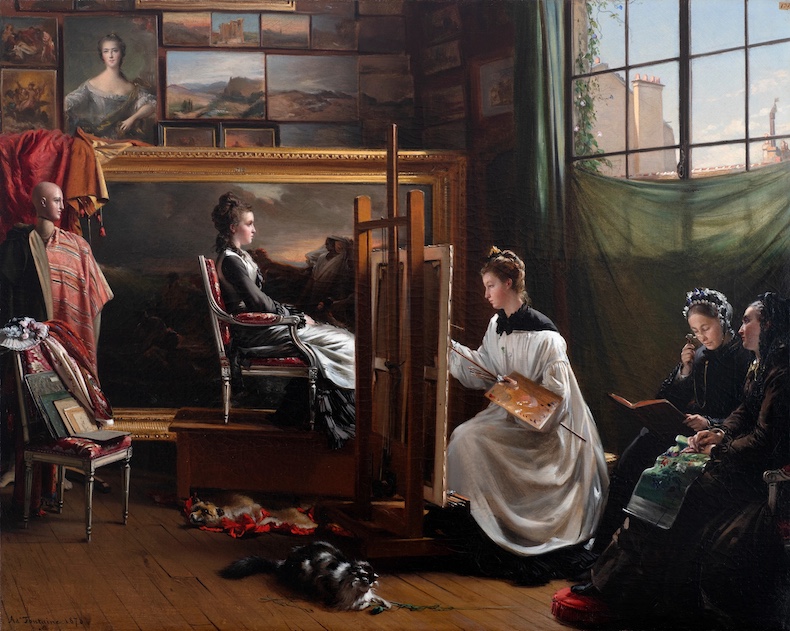
Victoria and Albert Museum, London
12th-century ivory carving of the Deposition of Christ
In November 2023, the UK government placed a temporary export bar on a walrus ivory carving, made in York in the 12th century, after it was sold at auction by its owners to the Metropolitan Museum of Art in New York. The Romanesque sculpture, a sorrowful and expressive depiction of the Deposition of Christ from the cross by Joseph of Arimathea, had been on long-term loan at the V&A from the owners – the heirs of collectors and dealers John and Gertrude Hunt – until the sale. The export bar was intended to give the V&A time to raise the £2m required to purchase the piece outright, which the museum has now done thanks to a £700,000 donation from the National Heritage Memorial Fund, £350,000 from the Art Fund and smaller contributions from various trusts, foundations and individual donors. The V&A will display the piece alongside another carving believed to be from the same altarpiece: an ivory fragment showing Judas being offered bread from the hand of Christ at the Last Supper.
Deposition from the Cross (c. 1190–1200), England (probably York). Victoria & Albert Museum, London

J. Paul Getty Museum, Los Angeles
Madonna of the Cherries (c. 1529), Quentin Metsys
Madonna of the Cherries, one of the most exquisite works by the early Netherlandish master Quentin Metsys, was remarkably famous in the years after its creation. It was owned by the Antwerp-based collector Cornelis van der Geest until 1668, when it disappeared and was thought to have been lost. When it turned up at a Christie’s auction in 2015, it was thought to be a copy from Metsys’s studio and sold for £255,000. Now, after a significant restoration and conservation process, the work has been confirmed as Metsys’s and has been purchased at auction by the Getty for £10.7m, making it the most expensive work by the artist ever sold. The painting is impeccably detailed and skillfully rendered, showing the Virgin and Child on an elaborate throne with a bunch of grapes and an apple in the foreground, and a stalk of cherries – the fruit of heaven – held between Mary’s fingers. It joins another panel by Metsys, Christ as the Man of Sorrows (c. 1520–25), in the Getty’s North Pavilion.
Madonna of the Cherries (c. 1529), Quentin Metsys. Photo: Christie’s
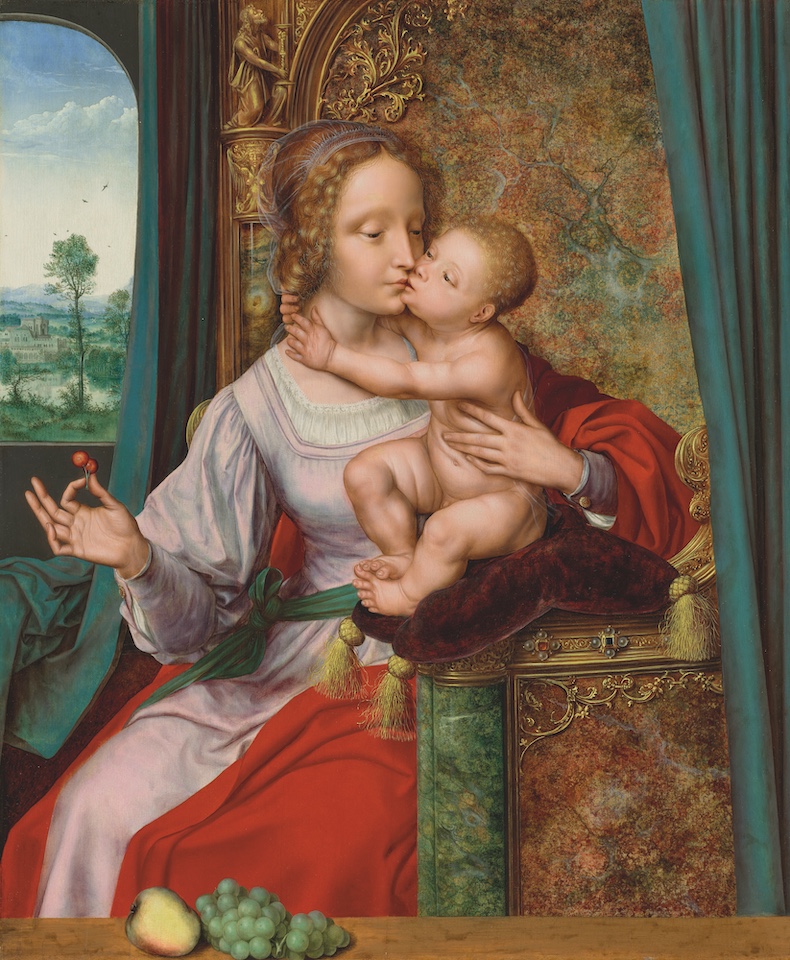
Berlin, Weimar and Dresden museum authorities
Caspar David Friedrich sketchbook
This year Germany is celebrating the 250th anniversary of the birth of the Romantic painter Caspar David Friedrich with significant exhibitions across the country, including a show at the Alte Nationalgalerie in Berlin which displayed more than 100 works by Friedrich and reportedly drew more than 200,000 visitors. Now the museum authorities of Berlin, Dresden and Weimar have jointly acquired a sketchbook belonging to Friedrich from the Berlin auction house Villa Grisebach. The sketchbook dates from the early part of Friedrich’s career, spanning three months in 1804, and contains drawings of Dresden and its environs. Of the five other sketchbooks by Friedrich known to survive, only one is owned by a German public institution, the Dresden Kupferstich-Kabinett; the other four belong to the Norwegian National Museum in Oslo. The sketchbook was displayed last month at the Kupferstichkabinett in Berlin and has now travelled to Dresden for the exhibition ‘Caspar David Friedrich: Where It All Started’; it will then go on display in ‘Caspar David Friedrich, Goethe and Romanticism in Weimar’ at the Schiller Museum, Weimar, in November.
A spread from the Caspar David Friedrich’s ‘Karlsruhe Sketchbook’, which the artist used from 25 April–1 June 1804. Photo: © SPK/Liesa Johannssen/photothek.de; courtesy Ernst von Siemens Art Foundation/Kupferstichkabinett – Staatliche Museen zu Berlin/Prussian Cultural Heritage Foundation/Kupferstich-Kabinett, Staatliche Kunstsammlungen Dresden/Klassik Stiftung Weimar, Museums Directorate
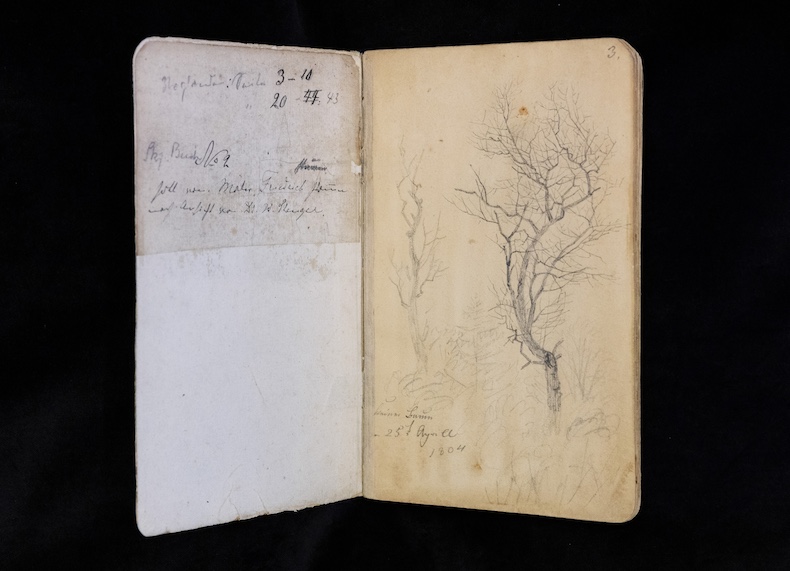
Gallerie degli Uffizi, Florence
The Mystical Marriage of Saint Catherine de’ Ricci (1746), Pierre Subleyras
In 1746, Pope Benedict XIV canonised the 16th-century nun Catherine de’ Ricci in a lavish ceremony. To mark the occasion, he commissioned a large painting from the French artist Pierre Subleyras – who spent the majority of his career in Rome and painted an exquisite portrait of the pope himself, now owned by the Met in New York – depicting Catherine’s ‘mystical marriage’, a vision in which Christ offers her a ring symbolising her faith, with the Virgin Mary, Thomas Aquinas, Mary Magdalene and a troupe of cherubs also present at the scene. The Uffizi has now announced its acquisition of the painting – an exquisite example of 18th-century religious art – at TEFAF Maastricht in February this year; it will undergo a restoration process before being hung in the Uffizi’s 18th-century galleries.
The Mystical Marriage of Saint Catherine de’ Ricci (1746), Pierre Subleyras. Gallerie degli Uffizi, Florence
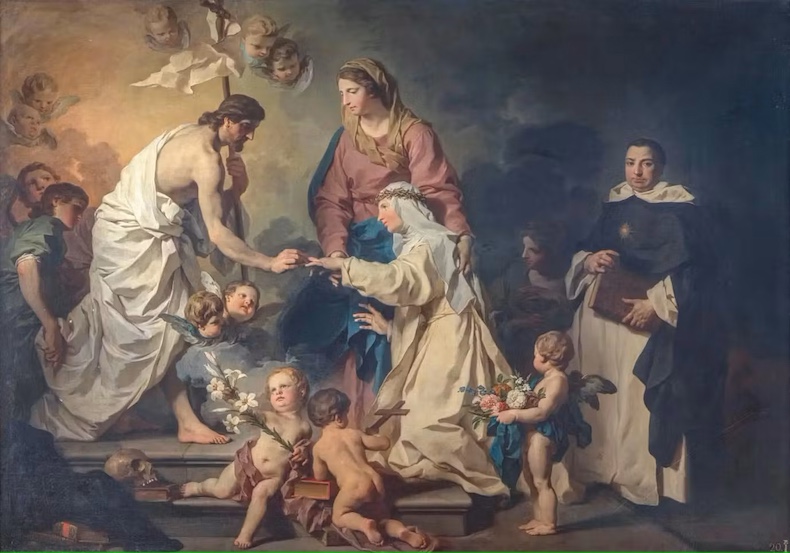
National Gallery, London
After the Audience (1879), Lawrence Alma-Tadema
Lawrence Alma-Tadema was immensely popular in his day, a master of depicting scenes from antiquity, particularly scenes of excess from ancient Rome and Greece – one of the most famous being The Roses of Heliogabalus (1888), a startling painting showing the tyrannical young emperor Heliogabalus having an avalanche of pink rose petals fall on his banquet guests. The artist’s work fell out of favour after his death and, despite attempts to rehabilitate him, his style, inflected with a blend of Pre-Raphaelite, neoclassical and Symbolist touches, remains rather unfashionable. Nonetheless, the National Gallery in London has bought one of his paintings for £2m from the collector Isabel Goldsmith. After the Audience (1879) shows Agrippa, son in law of the emperor Augustus, ascending the stairs of his villa, while a group of petitioners wait to one side to speak their requests. The scene is dominated by the statue of Augustus, which is modelled on the ‘Augustus of Prima Porta’, which had been discovered in 1863, just a few years before the painting was produced.
After the Audience (1879), Lawrence Alma-Tadema. Photo: © National Gallery, London
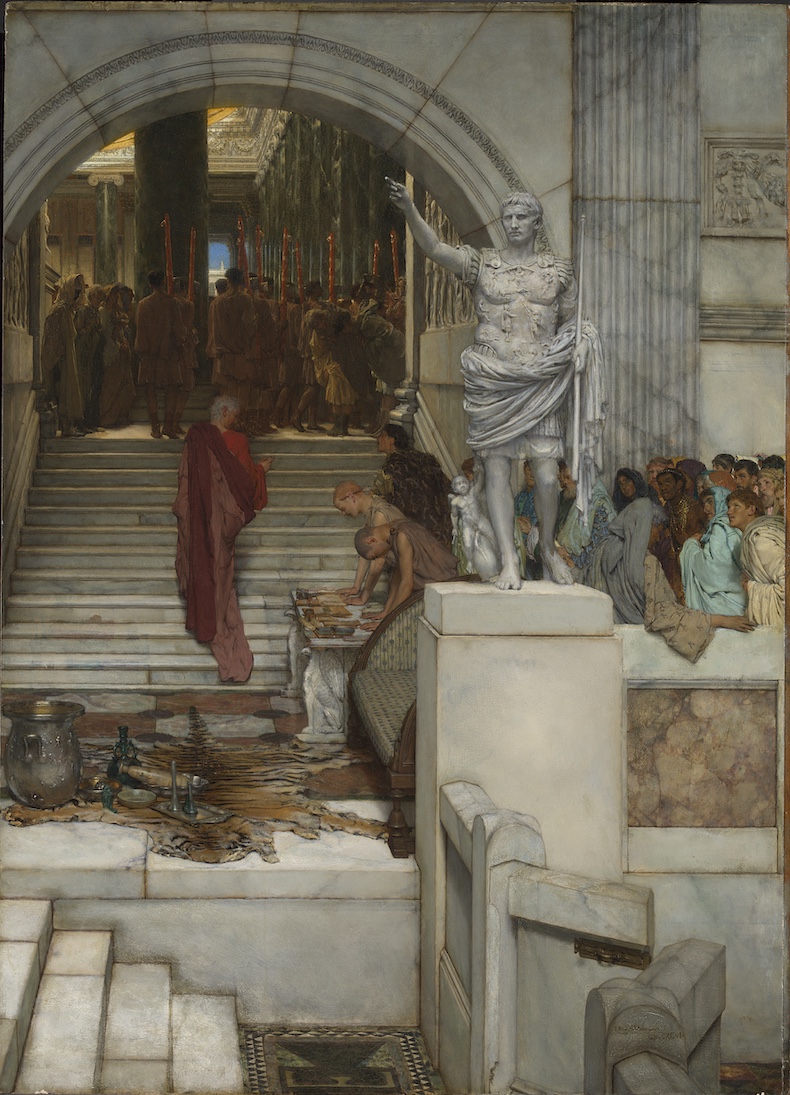
Cleveland Museum of Art
Six objects including a drawing by Maarten van Heemskerck and a Dutch ceramic flower pyramid
The Cleveland Museum of Art has expanded its encyclopaedic collection with the acquisition of six new objects, including an ink drawing of Jonah and the Whale by Maarten van Heemskerck from 1566, a 17th-century Dutch glazed earthenware flower pyramid and a depiction of the parable of the Good Samaritan drawn by Gustave Moreau in the 1860s. Van Heemskerck is one of the most important Haarlem-based artists of the 16th century; his drawing is skilfully executed and full of terror, showing the dragon-like whale belching Jonah out on to the shore of Nineveh while God looks on from the heavens. The flower pyramid – an elaborate tower with holes all the way up the side where individual flowers can be placed – is an impeccable example of the distinctive blue-and-white pottery that came out of Delft in the late 17th century. The coloured drawing by Moreau, one of the most significant figures in the development of Symbolist art in the 19th century, becomes the first work by the artist in Cleveland’s collection. The other three works are all from the early 20th century: a colourful abstract painting by Sophie Taeuber-Arp, a cubist collage from 1918 by the American artist Joseph Stella and a still life in graphite by Fernand Léger.
Jonah Cast Out by the Whale on to the Shore of Nineveh (1566), Maarten van Heemskerck. Cleveland Museum of Art
